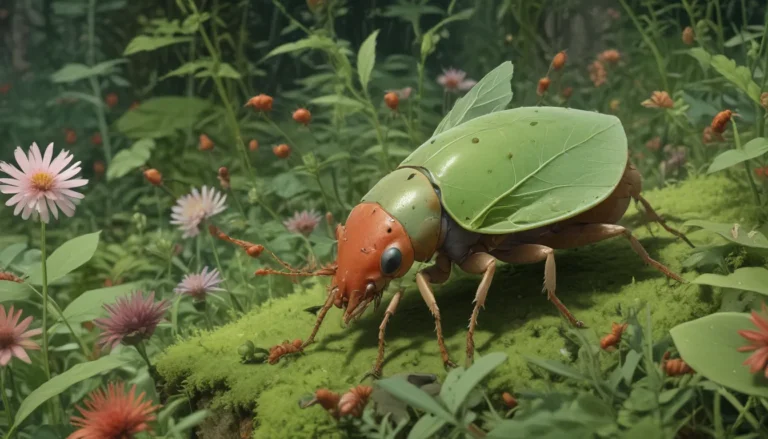The Ultimate Guide to Growing and Caring for American Bittersweet Vines

Introduction to American Bittersweet
American bittersweet, also known as Celastrus scandens, is a native plant with a rich history in North America. Often overshadowed by its invasive cousin, the Oriental bittersweet, this vine offers a beautiful alternative without the aggressive behavior.
In a time where climate change and habitat loss are prevalent, incorporating native plants like American bittersweet into your garden can make a significant impact on the environment.
Let’s dive into the world of American bittersweet and explore how you can grow and care for this native vine to create a sanctuary for wildlife in your backyard.
What You’ll Learn
- What Is American Bittersweet? – Cultivation and History – Propagation – How to Grow – Growing Tips – Pruning and Maintenance – Where to Buy – Managing Pests and Disease – Best Uses – Quick Reference Growing Guide
What is American Bittersweet?
American bittersweet thrives in woodland areas and prefers moist, rich soil. Recognized by its oval leaves and clusters of orange berries, this vine is a native treasure in North America.
It’s essential to identify American bittersweet accurately, as it closely resembles its invasive counterpart. The native vine’s terminal clusters of berries differentiate it from the axial clusters of the invasive species. Additionally, American bittersweet has pale green to white flowers that add to its charm.
Cultivation and History
American bittersweet may have been overshadowed by the Oriental bittersweet in horticultural history, but its importance is undeniable. Once a sought-after plant for its orange fruits, the native vine faced a decline in popularity with the introduction of its invasive relative.
Today, with a growing interest in native plants, it’s the perfect time to reintroduce American bittersweet into landscapes. Some legends suggest that the native vine was used for medicinal purposes by indigenous people, showcasing its historical significance.
American Bittersweet Propagation
Growing American bittersweet in your garden is a rewarding experience. While purchasing a mature plant is the simplest method, there are options for propagating this vine at home.
From Cuttings
Softwood cuttings taken from the plant’s growing tip root easily with the right conditions. Rooting hormone, sterile potting soil, and some care are essential for successful propagation. These cuttings provide a cost-effective way to expand your collection of American bittersweet vines.
From Seed
Growing American bittersweet from seed is a challenging but rewarding method. Cold stratification is necessary for seed germination, and it’s crucial to provide the ideal conditions for successful growth.
How to Grow American Bittersweet
American bittersweet is relatively low-maintenance once established in the garden. This native vine thrives in sunlight and moist, well-drained soil. Ensuring proper pollination by planting male and female vines in proximity is key to a bountiful harvest of berries.
Growing Tips
- Situate plants in full sun to dappled sunlight. – Top dress lean soils with compost annually. – Water weekly during droughts or dry seasons.
Pruning and Maintenance
Maintaining American bittersweet is straightforward, requiring minimal intervention. Patience, occasional pruning, and proper watering are key to maintaining healthy vines. Avoid excessive pruning to allow the vine to flourish and produce vibrant clusters of berries in the fall.
Where to Buy
Sourcing American bittersweet plants may require a visit to a specialized nursery. Online retailers like Nature Hills Nursery offer a variety of options, including male and female plants for successful pollination. Cultivars like ‘Autumn Revolution’ and ‘Sweet Tangerine’ provide alternatives for self-fertile plants.
Managing Pests and Disease
American bittersweet is relatively resilient to pests and diseases, making it an excellent choice for low-maintenance gardens. Monitoring for common pests like the two-marked treehopper and euonymus scale can help prevent issues. In case of infestations, targeted treatments with horticultural oils can effectively manage these pests.
Best Uses of American Bittersweet
American bittersweet adds beauty and wildlife value to gardens, making it ideal for arbor landscapes and wildlife habitats. Birds and other wildlife enjoy the berries, while the vine’s durable clusters make it a popular choice for seasonal decor. It’s essential to note that berries can be toxic if ingested by pets or humans.
Quick Reference Growing Guide
- Plant Type: Vine – Flower/Foliage Color: Greenish-white or yellowish/green – Native to: Central and eastern North America – Fruit Color: Yellow-orange capsule with red fruit inside – Hardiness (USDA Zones): 3-8 – Maintenance: Low – Bloom Time/Season: Fall – Tolerance: Drought, deer – Exposure: Full sun to part shade – Soil Type: Average – Time to Maturity: 3-5 years – Soil pH: 6.0-7.0 – Spacing: 3 feet – Soil Drainage: Well-draining – Planting Depth: Top of root ball level with soil surface – Uses: Wildlife garden, native plant garden, wreath making, seasonal decor – Height: 15-20 feet – Spread: 3-6 feet – Water Needs: Moderate – Common Pests and Diseases: Euonymus scale, two-marked treehoppers
Conclusion: Embrace the Beauty of American Bittersweet
American bittersweet is a valuable addition to any garden, offering beauty, wildlife value, and historical significance. By growing and caring for this native vine, you can create a vibrant ecosystem that supports pollinators, birds, and more.
Have you had success growing American bittersweet in your garden? Share your experiences and tips in the comments below. Whether you’re a seasoned gardener or new to native plants, incorporating American bittersweet into your landscape is a rewarding endeavor.
For more information on native species and vines, explore our recommendations for enhancing your garden with sustainable and beautiful plants.





